A New Show at Rome’s Casoli De Luca Explores Italian Artists’ Centuries-Long Fascination With Gold
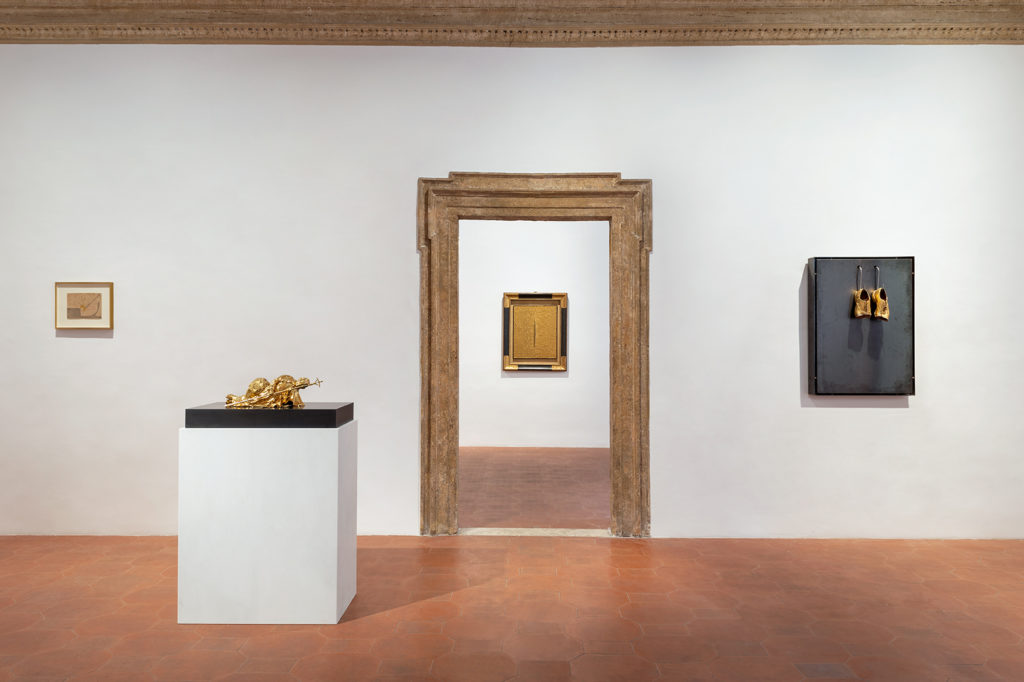

Katie White

As anyone who has even stepped into the dazzling interior of Venice’s San Marco Basilica or gazed upon the splendors of the Vatican can tell you, Italian artists have a fondness for gold. Considered alternately decadent, heavenly, or at times even profane, the color can pack a provocative punch, which might be the reason that, over the centuries, Italy’s artists have continued to bring gold into their work in new and sometimes unexpected ways.
Now, ORO d’ITALIA, a new exhibition at Rome’s Casoli De Luca, is taking a closer look at the evolution of gold by placing 20th-century masterworks by the likes of Giacomo Balla, Lucio Fontana, and Maurizio Cattelan, alongside historical antecedents.
Throughout the gallery, these glittering and gilded works are arranged to create insightful juxtapositions. Michelangelo Pistoletto’s gold Self Portrait (1960) hangs near a crucifix dating from the first quarter of the 14th century; a Lucio Fontana appears alongside a painting by Simone da Firenze, and so forth.
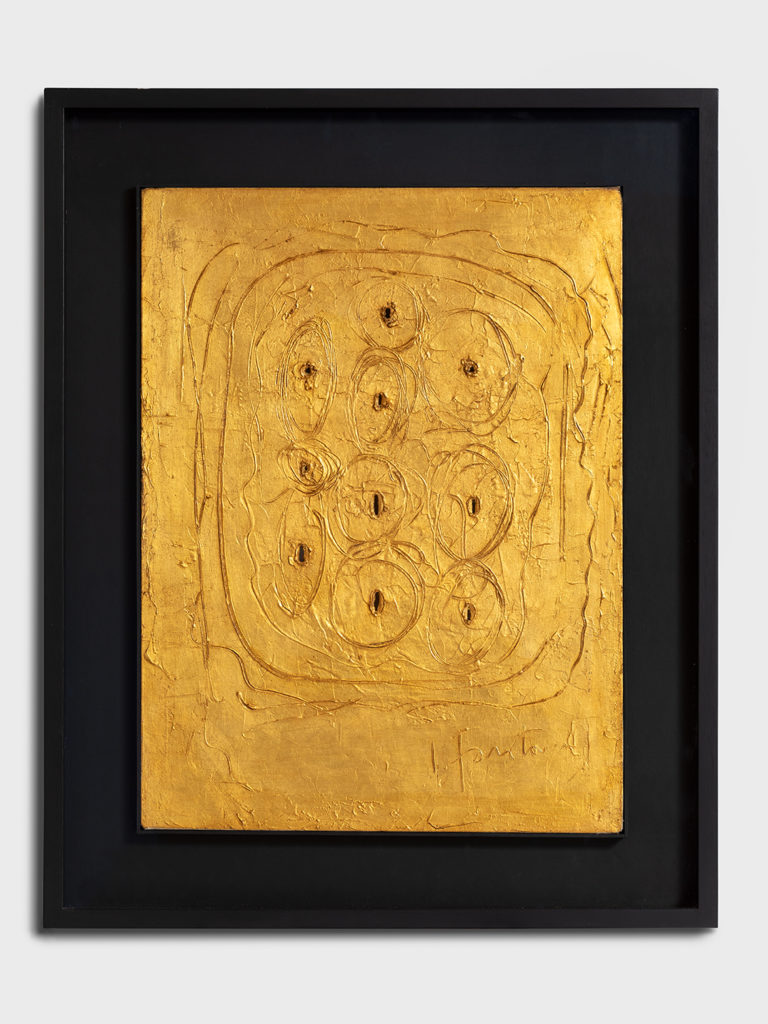
Lucio Fontana, Concetto Spaziale (1960-61). Courtesy of Casoli De Luca.
Gallery partners Sergio Casoli and Mattia De Luca said the idea for the exhibition emerged from long conversations with Elena Geuna, who, with Casoli, had co-curated a retrospective of works by Fontana at Palazzo Ducale in Genoa in 2008.
“We wanted to present and unfold a narrative of our Italian artistic identity,” wrote the gallerists. “Gold became the unifying theme, a choice that arose from the desire to restore the beauty of our country in a very controversial political and social time.”
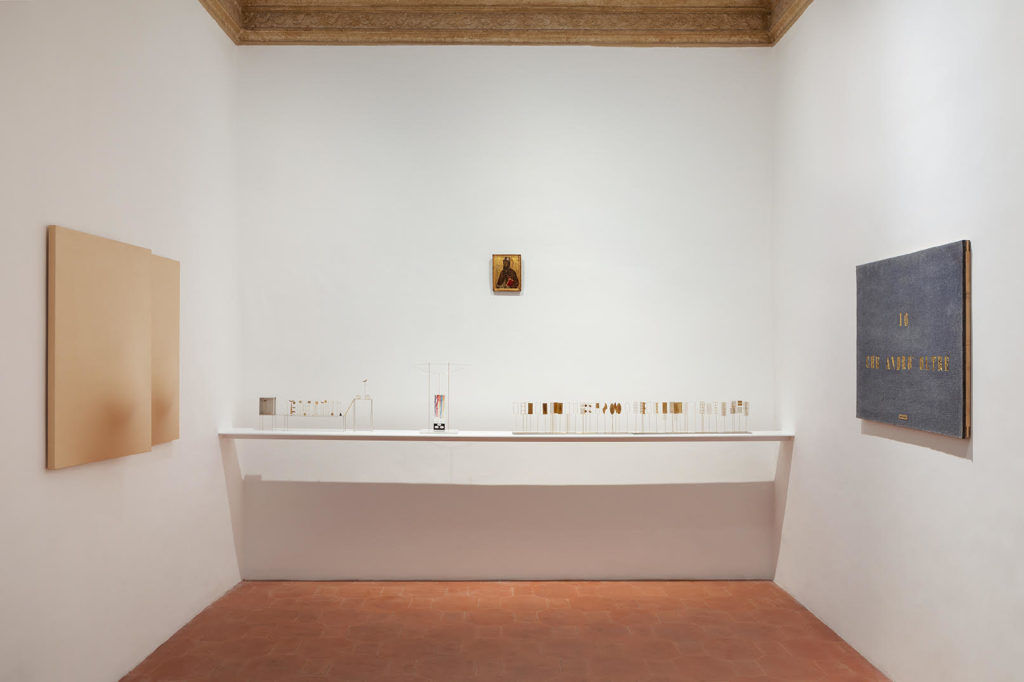
Installation view of “ORO d’ITALIA” Courtesy of Casoli De Luca.
Among the highlights of the exhibition is Giacomo Balla’s extremely rare Forma e Rumore (ca. 1913), which in its crystalline forms manifests the Futurist ambition to represent the experience of sound through graphic images. “In this work, the practice of the Impressionist en plein air becomes a study of urban reality in all its intricacy of lights, colors, movement, and even sounds,” said De Luca.

Installation view of “ORO d’ITALIA” Courtesy of Casoli De Luca.
Arte Povera artists are strongly represented with works by Alighiero Boetti, Giulio Paolini, Luciano Fabro, Jannis Kounellis, and Giuseppe Penone all on view. This is perhaps unsurprising as Casoli has long been considered one of the leading dealers and experts on this generation of artists.
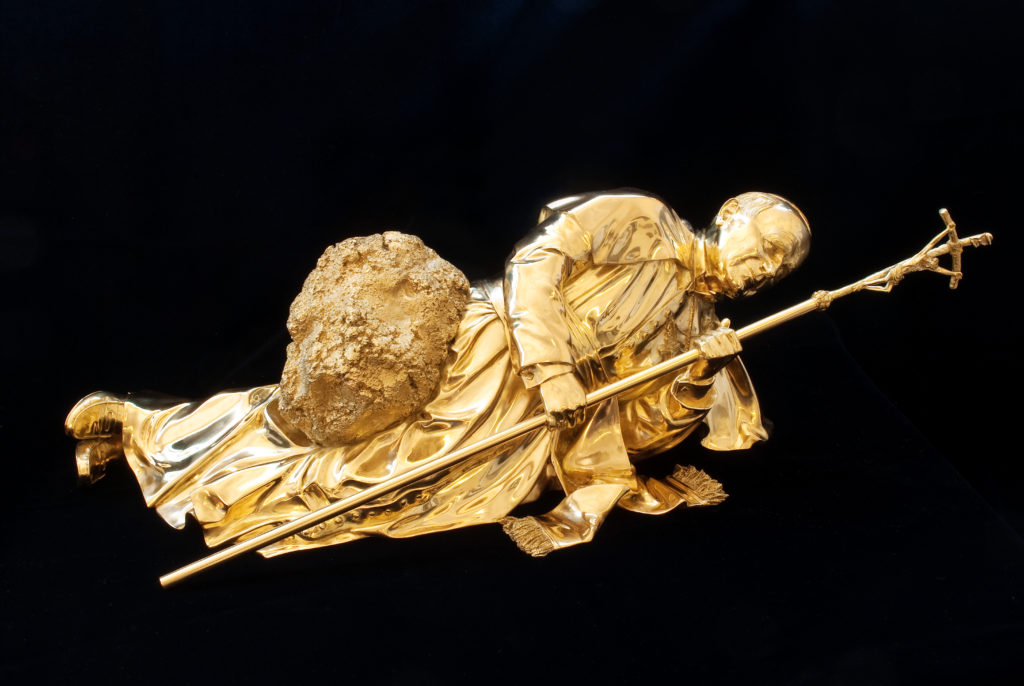
Maurizio Cattelan, La Nona Ora (2005). Courtesy of Casoli De Luca and Zeno Zotti.
Rounding out the exhibition are recent works by Cattelan, Lara Favaretto, Chiara Fumai, Giovanni Rizzoli, and an enamel painting on canvas by Rudolf Stingel, as well as a selection of jewelry made by Fontana, Enrico Castellani, and Kounellis during the 1960s to ’80s that bridge the worlds of art and craft.
While the exhibition certainly dazzles the eye, the relationships between the works underscore the mutable meaning of gold, shifting from the spiritual and celestial to the material world and even as a symbol of national identity.
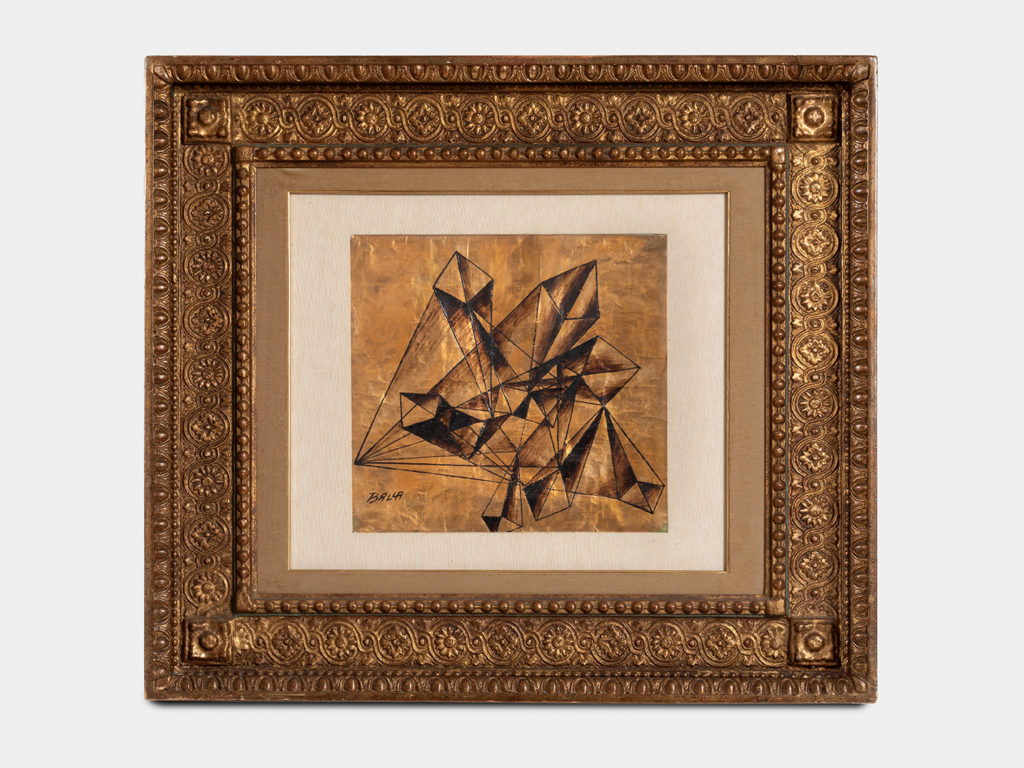
Giacomo Balla, Forma Rumore (circa 1913). Courtesy Casoli De Luca.
“In ancient religious painting, gold was the primary way of depicting pure abstraction. It transported man from a historical time tied to daily events and into the atemporal Infinite. Sacred figures were presented on gold backgrounds to suggest proximity to God,” said the gallerists, “but during the 20th century, Italian artists became concerned with form, identity, and country.
In this context, gold was both an experimental and a provocative pretext that called to the great Italian artistic tradition and ‘Italian Genius.’”
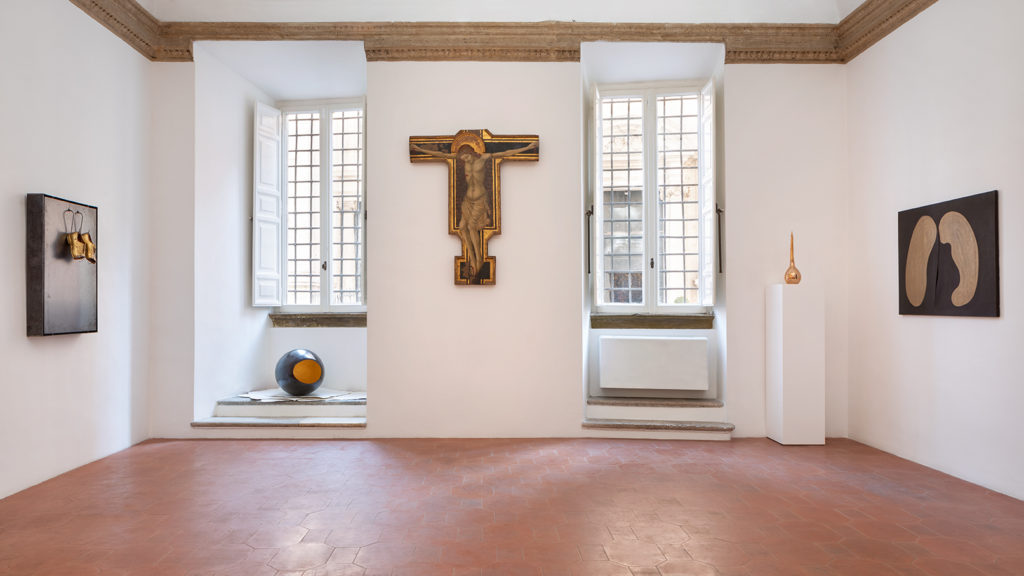
Installation view of “ORO d’ITALIA” Courtesy of Casoli De Luca.
In the increasingly nationalistic climate in Europe and throughout the world, the exhibition seems to ask what’s next.
“ORO d’ITALIA” is on view at Casoli De Luca through July 13, 2019.